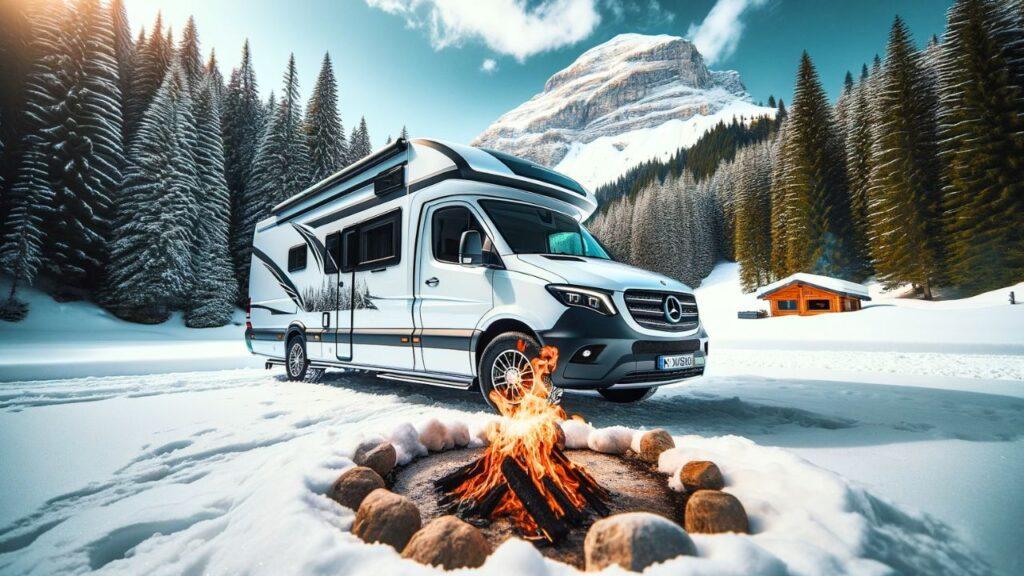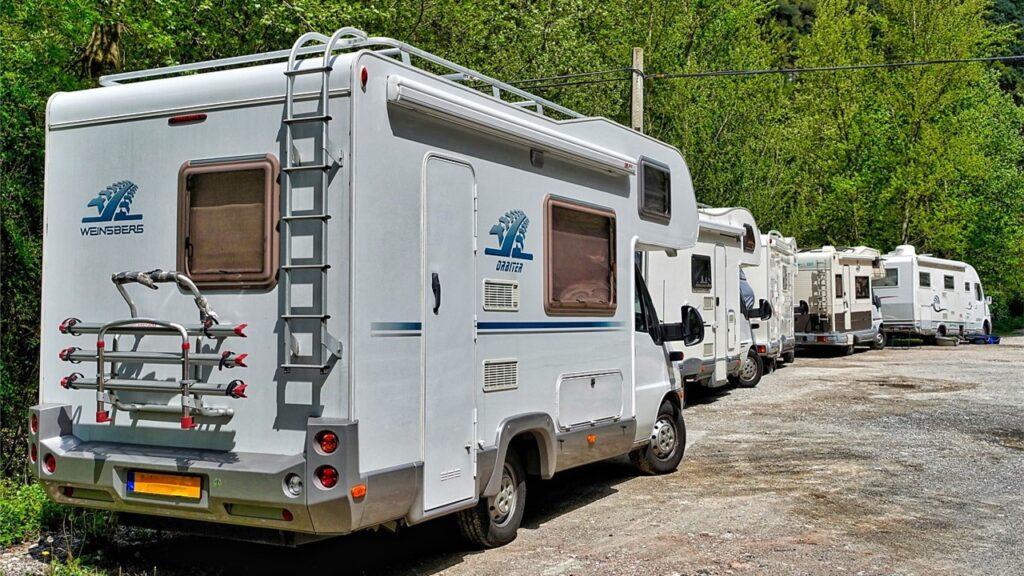
Puck lights are a campervan staple, offering compact and energy-efficient lighting for your cozy home on wheels. But getting the wiring right? That’s where things can get a little tricky and the big question arises “what size wire for campervan puck lights?”.
Choosing the right wire size isn’t just about getting the lights to work—it’s about keeping things safe and reliable. Stick around, and I’ll walk you through everything you need to know, even if this is your first time tackling campervan wiring.
Why Wire Size Matters for Puck Lights
Using the right wire size might sound like a small detail, but it’s a game-changer. If you use a wire that’s too thin, it can overheat, cause your lights to dim, or even start a fire. On the other hand, picking the right size means your puck lights will work efficiently, safely, and for the long haul.
Here’s why wire size makes such a big difference:
- Prevents overheating: Thinner wires struggle with higher currents, heating up quickly and posing a safety hazard.
- Reduces voltage drop: If the wire is too small, you’ll lose power along the way, and your lights won’t shine as bright.
- Increases lifespan of components: Proper wiring helps protect your lights and power supply from damage over time.
- Keeps your setup safe: The right wire gauge reduces the risk of electrical shorts or fires.
What Size Wire for Campervan Puck Lights?
For campervan puck lights, use 18, 20, or 22 AWG wire. If your lights are low-power and the wire run is short, 20 or 22 AWG is fine. For longer runs or brighter lights, 18 AWG is a better choice to handle the power safely and prevent dimming.
Recommended Wire Sizes for Campervan Puck Lights
Let’s break this down a little further. Here’s how to match wire size with your specific needs:
- 18 AWG: Ideal for setups with longer wire runs or higher amperage puck lights.
- 20 AWG: Great for medium-length runs or standard LED puck lights.
- 22 AWG: Best for short wire runs with low-power LEDs (like accent lights).
When in doubt, go one size thicker. It might cost slightly more upfront, but it’s worth it for safety and performance.
Understanding Wire Gauges
Wire gauges can seem confusing at first because they work backward—the smaller the number, the thicker the wire. So, an 18 AWG wire is thicker than a 22 AWG wire. In campervan setups, thinner wires are often fine for lights, but as the length of your wiring increases, you’ll need a thicker gauge to handle the load without losing power.
Why does this matter? A thinner wire over a long distance can lead to something called “voltage drop,” where your lights get dimmer the further they are from the power source.
Key factors influencing wire gauge choice:
- Length of the wire run: The longer the distance, the thicker the wire should be.
- Amperage of the puck lights: Higher wattage lights need thicker wires to handle the current.
- Voltage drop tolerance: Sensitive lights need consistent power to perform at their best.
By keeping these points in mind, you’ll be well on your way to wiring puck lights that shine bright every time you flip the switch.
How to Calculate the Correct Wire Size
Here’s how to calculate the right wire size for your campervan puck lights:
- Measure the total length of the wire (to and from the power source).
- Find the total current your lights will use (in amps).
- Use a voltage drop chart or calculator to match your setup with the right wire gauge.
Measure the Total Length of the Wire
Start by figuring out how far the wire needs to go. This includes the distance from your power source to the lights and back. Long wire runs mean more potential voltage drop, so knowing the exact length is important. Use a tape measure or estimate it based on your van layout.
Find the Total Current Your Lights Will Use
Look at the specs for your puck lights to find their amperage (or wattage). If it’s listed in watts, divide the total watts by the voltage (usually 12V) to get the amps. Add up the current for all lights in the circuit—this is the total current your wire needs to handle.
Match Your Setup to a Wire Size Chart
Once you know the wire length and current, check a voltage drop chart or calculator. These tools will help you find the right wire gauge to keep voltage drop under control (typically below 3%). Choose a thicker wire if your setup is borderline.
Tools and Materials Needed for Wiring
You’ll need a few tools and supplies to wire your campervan puck lights safely and effectively. Having the right gear makes the job easier and ensures a solid connection.
Tools and supplies:
- Wire strippers for cleanly removing insulation.
- Crimping tool to connect wires securely.
- Heat shrink tubing for insulating connections.
- Multimeter for checking voltage and continuity.
- T-tap connectors for splicing wires.
- Marine-grade wire (18–22 AWG) for durability.
Step-by-Step Guide to Wiring Campervan Puck Lights
Here’s how to wire campervan puck lights from start to finish:
- Cut and strip the wires.
- Connect the wires with crimp connectors.
- Secure and insulate the connections.
- Test the circuit before finalizing.
Step 1 – Cut and Strip the Wires
Measure the length of wire you need for your setup. Cut it to size using wire cutters, and strip about half an inch of insulation from each end. Be careful not to nick or damage the copper strands while stripping.
Step 2 – Connect the Wires with Crimp Connectors
Attach crimp connectors to the stripped ends of the wires. Insert the wire into the connector, then use a crimping tool to create a secure connection. For splicing, T-tap connectors can make the process quicker and easier.
Step 3 – Secure and Insulate the Connections
Slide heat shrink tubing over each connection and use a heat gun to shrink it tightly. This step protects the connection from moisture, dust, and accidental short circuits.
Step 4 – Test the Circuit Before Finalizing
Before tidying up, use a multimeter to check that the lights are receiving power and working as expected. If everything looks good, secure the wires with cable ties and tidy up your workspace.
Common Mistakes to Avoid
Wiring campervan puck lights is straightforward, but there are a few common pitfalls to watch out for.
- Using the wrong wire size: Too thin, and it can overheat or dim the lights.
- Skipping insulation: Unprotected connections can short out or corrode.
- Overlooking voltage drop: Long runs need thicker wire to maintain power.
- Not testing before finalizing: Always check the setup before securing everything.
- Ignoring safety: Loose wires or poorly crimped connections can cause problems later.
Take your time, double-check your work, and enjoy your well-lit campervan setup!
Conclusion
Choosing the right wire size for your campervan puck lights isn’t just a technical step—it’s what keeps your lighting system safe, reliable, and efficient.
For most setups, 18, 20, or 22 AWG wires will work, with the size depending on the length of the run and the power draw of your lights. Remember, longer distances or brighter lights need thicker wires.
We also covered how to calculate the correct wire size, the tools and materials you’ll need, and common wiring mistakes to avoid. With this guide, you should feel confident tackling the job and creating a well-lit campervan setup.
Take your time, double-check your work, and enjoy the glow of your perfectly wired puck lights!
FAQs
What happens if I use a smaller gauge wire?
Using a wire that’s too thin can cause it to overheat, leading to potential fire hazards. It can also cause voltage drop, which makes your puck lights dim or flicker.
Can I mix different wire sizes in one circuit?
Yes, but it’s best to avoid it unless necessary. Mixing wires can create weak spots or uneven current flow, especially if the wire sizes aren’t matched well. Stick with one size for consistency and safety.
What type of wire (solid vs stranded) is best for campervans?
Stranded wire is the better choice for campervans. It’s flexible and less likely to break under the constant vibrations of driving. Solid wire is more rigid and can snap over time.
As outdoor enthusiasts ourselves, we understand the significance of reliable gear that can withstand the elements and support you throughout your journey. We try to provide as much real life information with our guides and how tos to the readers as possible. Our honest and transparent reviews of essential outdoor gadgets and products are rooted in testing and experience. We take great satisfaction in offering unbiased evaluations, ensuring that you can make informed decisions when investing in outdoor gear. As an affiliate website, we may earn a small commission from some of the products we feature. However, rest assured that our opinions are not influenced by this, and your trust is always our top priority.



